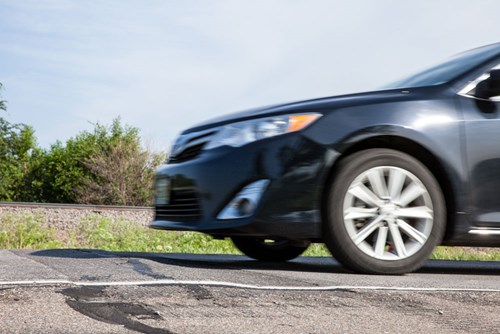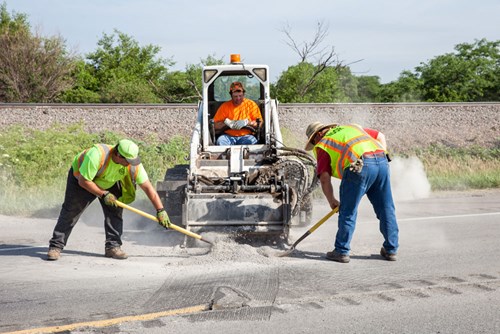High Summer Temperatures Cause Pavement Blow-Ups

Along with rising temperatures in Nebraska comes the potential for pavement “blow-ups.” These occur when thermal expansion forces the pavement to buckle and shatter. The Nebraska Department of Transportation urges motorists to be aware of the increased potential for pavement blow-ups, particularly during the summer months.
A pavement blow-up occurs when the roadway surface expands at a crack or joint where moisture has seeped in. That crack weakens the pavement and the heat causes the pavement to buckle and warp. This usually occurs on very hot afternoons, as the maximum temperature for the day is reached, typically during afternoons with 90-degree or hotter temperatures.
A blow-up generally begins by slight spalling at the joint. The condition may either get progressively worse or the blow-up may occur instantaneously. In most cases, temporary or emergency repairs will be required to accommodate traffic.
According to District 1 Operations and Maintenance Manager Roger Kalkwarf, there have already been at least a dozen pavement blow-ups in his district. He added that they can vary depending on whether the roadway is concrete or if it has asphalt overlay.

“Some blow-ups on roadways with asphalt overlay will start pushing the asphalt first and create a bump, which we will cut off or grind down. On concrete pavement, the blow-ups can range from a few inches to over a foot, depending on how old the concrete is. The older the concrete, the more blow-ups we can expect. Also, if we have a wet spring, followed by very hot temperatures, we will have more blow-ups,” Kalkwarf noted.
While it is difficult to know where and when a pavement blow-up will happen, crews with the Nebraska Department of Transportation are monitoring state routes for these blow-ups and will make repairs as soon as possible.
Motorists are urged to pay special attention to pavement surfaces when driving during afternoons with 90-degree heat or hotter temperatures. Use caution and reduced speeds when approaching broken pavement areas. Motorists who witness a pavement blow-up are asked to contact the nearest law enforcement agency to ensure traffic is routed around the blow-up until work zone signage and repair crews are on the scene.
